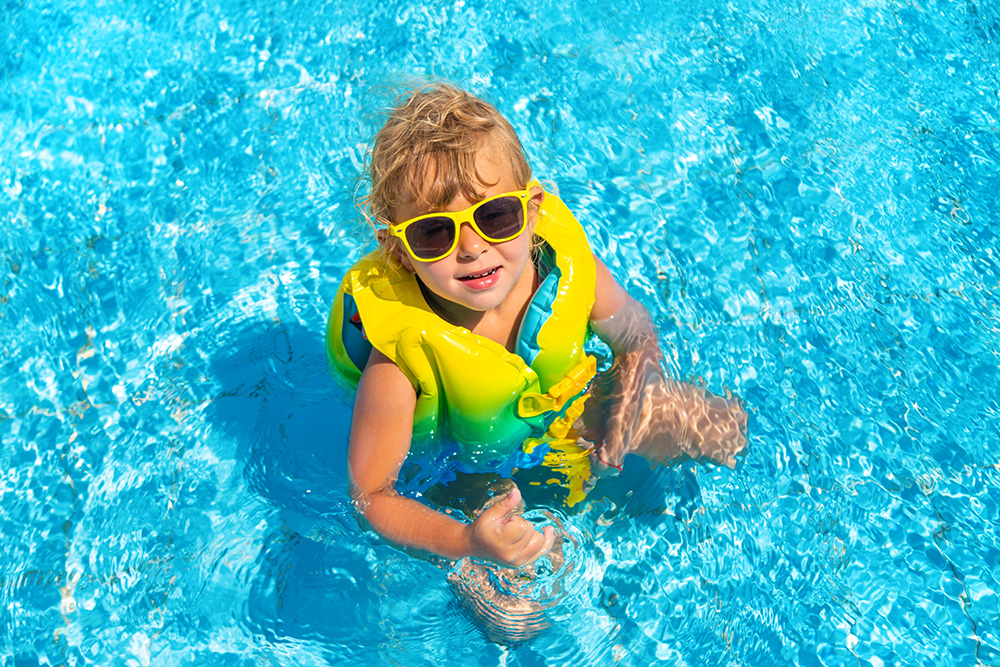Summertime is the perfect season for enjoying the water – whether it’s swimming, boating, or fishing. However, it’s crucial to take precautions to ensure safety, especially for children.
In Mississippi, the risks are particularly high. According to the Centers for Disease Control and Prevention, the state ranks 7th in the United States for the highest per capita drowning death rate for children at 1.85 per thousand. This alarming trend highlights the need for awareness and proactive measures to prevent drowning incidents.
Drowning can happen in as little as one inch of water. It is one of the leading causes of death for children. Knowing how to prevent drowning and recognize its signs can keep your children safe.
Most Common Causes of Drowning
Drowning happens quickly and quietly. A child can drown in a bathtub, a basin, or a pool. Even a small amount of water can be deadly.
The most common places for drowning are pools and open water. But it can also happen in the home. A child left alone in the bathtub for just a few minutes can drown. Buckets of water or even toilets can be dangerous for toddlers.
Supervision is key. Never leave a child alone near water, even for a moment. It only takes a few seconds for a tragedy to happen.
Warning Signs of Drowning
Drowning does not look like it does on TV. A drowning child cannot call for help; they are trying too hard to breathe. Their head may bob above and below the water. Their arms may move as if trying to climb an invisible ladder.
Parents must watch for these signs. If you see a child struggling in the water, act immediately. Shout for help and get them out of the water as quickly as possible.
Water Safety Rules for Parents
Parents can take steps to keep their children safe around water. Here are some important measures:
- Learn CPR: This life-saving skill can make a critical difference while waiting for help to arrive.
- Supervise your children in the water: Always keep an eye on them in bathtubs, pools, and open water like lakes or oceans. Do not rely solely on lifeguards or flotation devices.
- Secure your pool area: Install fences and gates to prevent children from entering the pool area unsupervised.
- Teach water safety rules: Set clear boundaries and educate your children about staying safe around water.
Water Safety Rules for Kids
Kids need to know how to stay safe around water. Teach them the following easy-to-remember rules:
- Always tell an adult when you are going swimming.
- Do not run near the pool. Wet surfaces can be slippery.
- Wear your personal flotation device (PFD) if you are not a strong swimmer.
- Never jump on a friend in the water. It can cause serious injuries.
These rules are simple but important. Following them can prevent accidents and keep everyone safe.
What is Dry Drowning?
You may have heard the term “dry drowning.” It is often used to describe a delayed drowning or secondary drowning. But the American Red Cross says this is not a real medical term.
What people call “dry drowning” is actually a rare complication. It happens when a small amount of water enters the lungs. This can cause lung damage or other medical issues like aspiration pneumonia. A better term is “secondary injury from a near-drowning.”
If your child has been in the water and shows signs of breathing trouble, get help. Watch for symptoms like coughing, chest pain, or difficulty breathing. These could be signs of a serious problem.
When to Visit Urgent Care for Drowning Injury
Any drowning or near-drowning incident is serious. Take the following steps if your child experiences any distress in the water:
- Call 911 immediately if your child is unresponsive after being in the water. Every second counts in saving a life.
- Watch your child closely, even if they seem fine after a near-drowning.
- Look for signs of trouble, like repeated coughing or difficulty breathing, within an hour or two of being in the water. These could indicate water aspiration, which happens when water gets into the lungs.
Armory Urgent Care: Your Partner in Water Safety for Children
At Armory Urgent Care, we understand that accidents can happen, even with the best precautions. That’s why our dedicated providers are here to offer compassionate care for your entire family when you need it most.
Our team is experienced in addressing issues like water aspiration or breathing difficulties that can arise after a near-drowning incident. We provide prompt, professional attention to ensure your child’s safety and well-being.
Whether it’s a minor injury or a concern following a water-related incident, we’re ready to help. Open daily from 8 a.m. to 7 p.m., we welcome walk-ins, so you never have to wait for the care your loved ones deserve.

